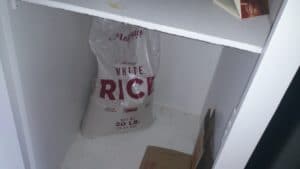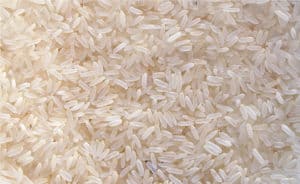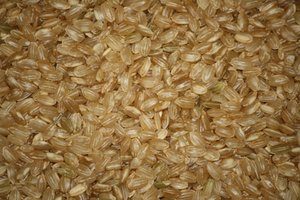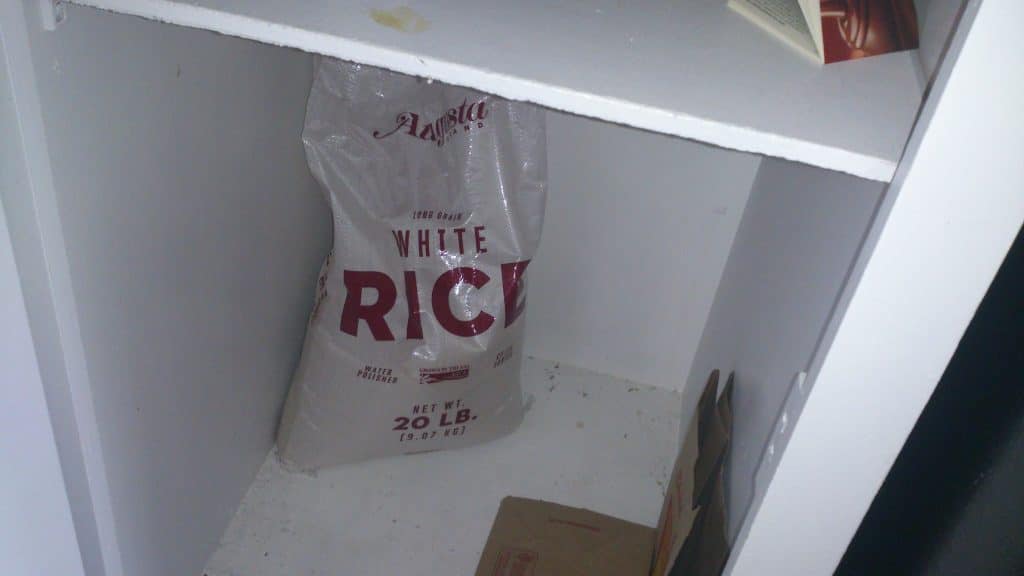
When I was a really young kid my interest in rice was to absorb soy sauce and serve with Mom’s stir fry. Obviously at a really young age I didn’t realize how good a survival food rice was or that we ate it so much because it was so cheap on the food budget. However, the fact that I’d quickly grow to love the outdoors and survival meant it was only a matter of time until I started looking at rice differently.
My background story
While my interests as a kid and a Boy Scout in survival started almost exclusively in wilderness survival, imagining the classic man vs. nature scenarios that could come out of an emergency situation, as I grew older that interest expanded. Maybe it was from reading so many history books.
Maybe it was from seeing natural disasters on television – and a slow response to help those trapped or in danger. Maybe it frankly came from living in Fairbanks, Alaska where even “One mile out of the city” could mean plenty of life and death scenarios if you weren’t careful.
Whatever it was, soon my interest in prepping and long term survival was born. While food is one of the lowest concerns in a true wilderness survival situation, what about a long-term disaster? What if the post-apocalyptic fiction I enjoyed sometime in my lifetime became reality? At that point surviving for any amount of time meant having plenty of food on hand.
Plenty goes bad quickly, but a properly stored bag of rice could last a long time. In fact, I wasn’t even sure if rice could go bad or not (quick answer: it can but it takes a long time). Whether stretching the food budget in college, preparing in case of long-term blackout, or just wanting to prepare (it would be years before I’d learn the SHTF acronym preppers and survivalists commonly use), it became apparent that I needed to learn more about rice.
If you want to learn more from whether rice goes bad or not, to the shelf life of rice, to ways to extend the life of dry rice, you’ve come to the right place!
Related: Check out this article on underrated survival food!

Table of Contents
Can Rice Go Bad?
The quick answer is yes, dry rice can go bad. However, as long as it isn’t improperly stored or comes into contact with water or mold then it has a long shelf life. In other words, when properly stored a bag (or bucket) of white rice can last not only years but even decades. However there are certain steps you need to take in order to get the most years (or even decades) out of your rice.
Assuming white rice isn’t infested by pests or stored in a place where moisture can get to it, then it will have a shelf life of about 7 years assuming it’s stored at consistent temperatures at or below 70 degrees.
Storing white rice in buckets with an oxygen absorber to limit the oxygen in the bucket can extend that up to a total of ten years’ shelf life.
In theory, storing these in an area where the temperature is consistently considerably lower than 70 degrees (like 50 or even 40) can actually add quite a few years to those numbers. This is especially true if there are no moisture or pest issues. No moisture or exposure to pests helps
However, if you’re willing to go the extra distance to use things like vacuum sealing with bucket storage and you can arrange a wide variety of factors so that the white rice can last up to 30 years without freezing.
That is pretty dang impressive and other than honey, you’re going to be really hard pressed to find anything else that will last that long.
For more on this check out the amazing video at the end of the article, and look at the ads a touch further down for the specific products you’ll need to get this done.
Buckets or bags?
For most people a bag of rice might seem like plenty. When kept away from pets, moisture, and kept in a solid cool temperature (preferably under 70 degrees) white rice can last quite a long time. While it might be convenient to keep in bags, and when you’re using white rice for a non-emergency preparedness situation (as the first picture in this article) then keeping it out in a bag is fine.
However if you’re going for length you need to control the storage area as much as possible. This means buckets are far superior to the bags that white rice generally come in. Add oxygen absorbers in the buckets to extend that natural shelf life of white rice.
So with pure bag versus bucket rice storage argument go with buckets. That said, this can be taken a step further with special bags and vacuum sealing to extend the life even further, but these bags should still be put into a bucket.
Ways to Extend Rice’s Shelf Life
There are multiple ways to extend the natural shelf life of white rice. Obviously we have already gone over many of these options, but sometimes it’s best to see all the points in list form to really get a handle on the best way to take care of it.
Keep in mind what all of these things have in common. What is that? They focus on preventing the biggest common spoilers of white rice. Those are temperature, oxygen, moisture, and pests.
When you can put those out of the equation, you can radically increase how long your dry rice supply lasts.
This is where oxygen absorbers, solid sealable buckets, and even vacuum sealing come into play. Add in cool temperatures and you will be all set to prepare for any situation that could possibly arrive.
So if you want to extend the shelf life of your white rice then you should look at:
- Store at cooler temperatures – generally speaking the lower the better
- Set up white rice so there’s no moisture
- Prepare with oxygen absorbers
- Store in sealed buckets versus bags
- Use vacuum sealing in order to really extend the life of rice
- Protect from pests
- Possibly freezing it in tightly vacuum sealed bags

Brown Rice Vs. White Rice
Many people ask questions about brown rice and whether the same answers that apply to white rice also apply to brown rice, as well. This makes sense seeing as how so many food articles talk about brown rice being healthier and more nutritious. This is actually true. All things being equal when nutrition is the main concern, brown is the way to go.
However brown rice doesn’t store for nearly as long as white rice. Brown rice has extra oils in it that gives it about a 6 month shelf life unless additional steps are taken to extend its life. Even then, it can’t be made to last as long as the white stuff.
So while both can be solid foods, when it comes to survival white rice is the way to go. It has a much longer shelf life than brown rice does.
So What’s The Verdict?
Rice can go bad over time, but that doesn’t change the fact that rice is amazing as a long-term survival food. There’s a reason it’s one of the most popular grains in the world. Rice is delicious, versatile, easy to cook, allergy free, inexpensive, and finally it also provides plenty of calories and double the food volume once cooked.
White rice can go bad, but even in normal storage circumstances it keeps for an absurdly long time. Years, even. When even just a few further precautions are taken white rice can stay good for many years, and with a little bit of solid prep and storage in theory the white rice can stay good for up to three decades.
That’s literally about as good as it can get.

